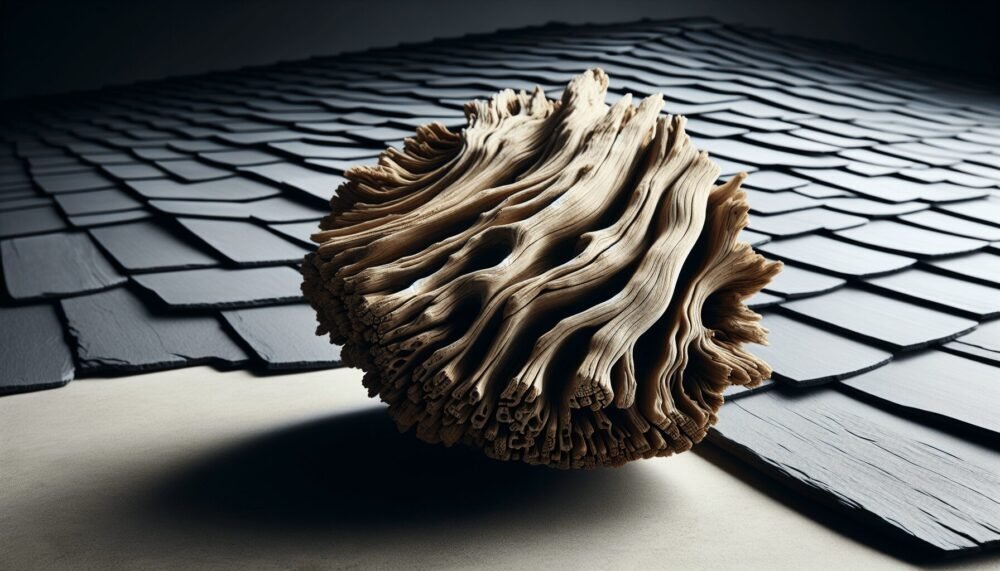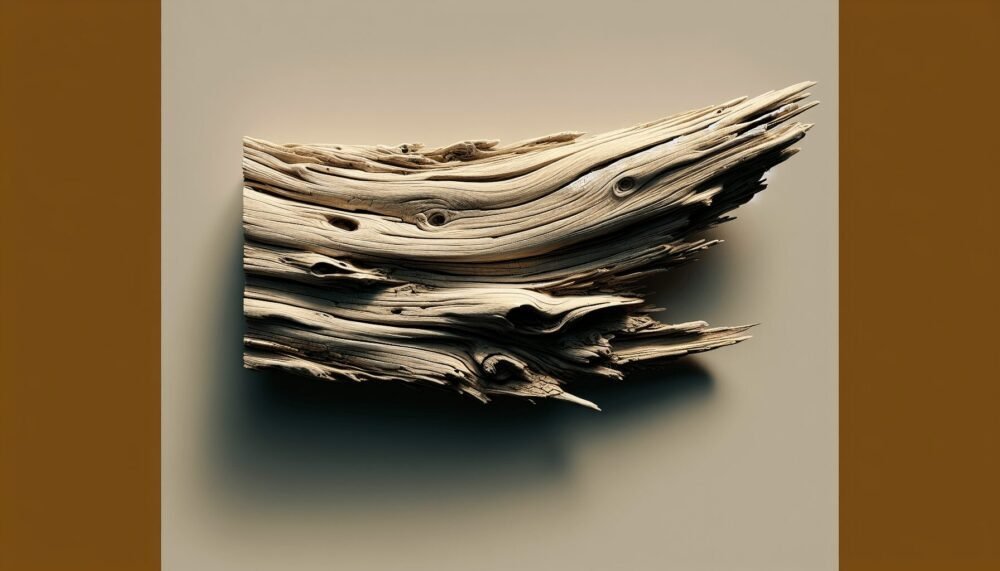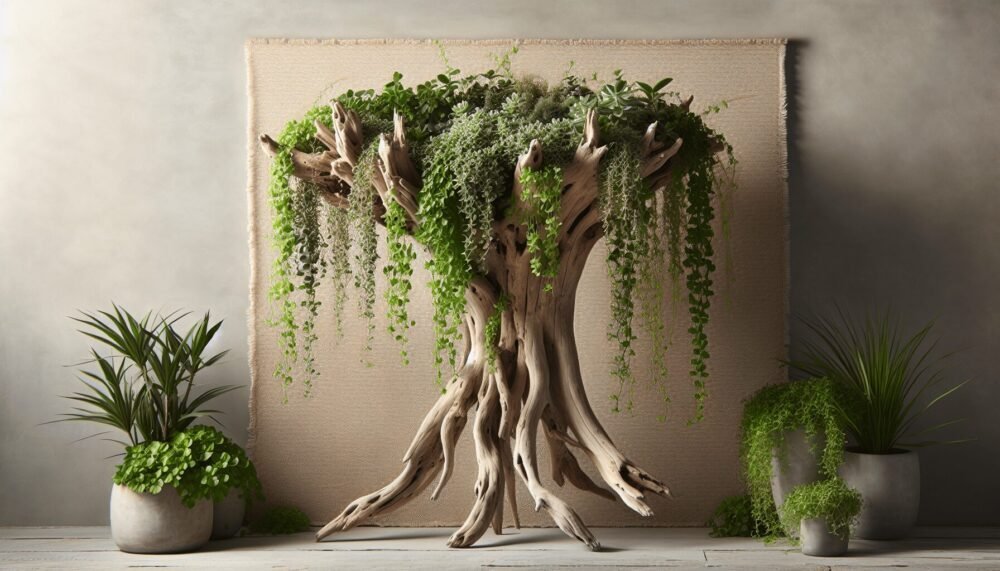Have you ever stumbled upon a massive piece of driftwood and wondered about its journey or the stories it could tell? Driftwood, with its intriguing shapes and unique textures, can transform into incredible art that captivates the imagination. The beauty of driftwood lies not only in its natural aesthetic but also in the sheer size and creativity it commands when artists reimagine it as a medium for art.

The Allure of Driftwood
What is Driftwood?
Driftwood originates from trees and plants that have been washed into the ocean or sea, primarily as a result of storms, floods, or erosion. This wood can travel extensive distances, shaped by the forces of nature before it eventually lands on shores. Its appeal in art stems from the natural weathering process that gives it unique textures and organic forms. The result is wood that has been naturally sculpted over time by environmental elements such as water, wind, and sun.
Why Driftwood is a Popular Art Medium
Driftwood’s popularity as an art medium is due in part to its organic and unpredictable shapes, which inspire artists to create remarkable and often unconventional works. Artists are drawn to the sustainable aspect of using what is essentially discarded material to create something beautiful and meaningful. The wood’s natural beauty requires minimal alteration, allowing artists to showcase nature’s own artistry while also promoting environmental consciousness.
The Process of Creating Huge Driftwood Art
From Collection to Creation
Creating large-scale driftwood art begins with the careful selection of pieces. Artists often spend hours scouring beaches, lakeshores, and riversides to find just the right pieces of wood. Each piece is chosen based on its shape, size, texture, and potential to transform into a part of a larger creation.
Once collected, the wood is often cleaned to remove any salt, sand, or debris that may hinder the artist’s ability to work with it. Preservation may also be necessary to ensure the longevity of the piece, particularly if it will be displayed outdoors. This could involve treating it with natural oils or varnishes that protect the wood without detracting from its appearance.
Designing Large-Scale Pieces
Designing a massive piece of driftwood art requires a robust understanding of both the material and the form to be created. Artists often start with sketches or models to visualize how the different pieces will fit together. The process often involves a great deal of creativity and problem-solving, as the irregular shapes and sizes of driftwood mean that no two pieces will fit together the same way.
A common technique in creating large pieces is to use pegs or dowels along with natural binding materials to connect pieces of driftwood without visible modern fixtures. This maintains the natural beauty and organic feel of the work.
Famous Driftwood Artists and Their Works
Driftwood Masters You Should Know
There are artists who have gained international recognition for their stunning driftwood sculptures. These artists have pushed the boundaries of what can be achieved with this medium, creating breathtaking pieces that are displayed in galleries and public spaces all around the world.
James Doran-Webb
James Doran-Webb is renowned for his incredible lifelike driftwood sculptures of animals. His work often captures motion and dynamism, breathing life into static pieces of wood. His sculptures, such as galloping horses or soaring birds, are intricately constructed and incredibly detailed, showcasing both his artistry and the beauty of driftwood itself.
Heather Jansch
Heather Jansch specializes in driftwood sculptures of horses, capturing the majestic grace and power of these animals. Her sculptures are large and imposing yet possess a fluidity that makes them appear almost alive, as if they could gallop away at any moment.
Deborah Butterfield
Known for her large horse sculptures, Deborah Butterfield utilizes driftwood among other materials to create her pieces. Her works are celebrated for their ability to convey the spirit and energy of horses through found materials.
Notable Works and Installations
Some driftwood artworks are must-sees for their scale and creativity. Public installations and sculptures by these artists have garnered admiration worldwide.
The Wave by James Doran-Webb showcases a powerful horse breaking through a wave, capturing the raw power of nature.
The Horsemen of the Apocalypse, also by James Doran-Webb, is a dramatic series of sculptures capturing the destructive beauty and chaos associated with the end times.
Driftwood Art Exhibitions and Locations
Where to Find Driftwood Art
Many driftwood sculptures are part of private collections, but numerous works are publicly accessible. Galleries, outdoor parks, and specific art installations offer opportunities to experience these breathtaking pieces.
Visiting Driftwood Art Installations
There are various locations around the world known for their impressive driftwood art displays. Here’s a table highlighting some notable places:
| Location | Artists | Description |
|---|---|---|
| Art in Nature, Belgium | Various | Known for its blend of natural landscapes and art installations including driftwood art. |
| Westonbirt Arboretum, UK | James Doran-Webb | Features a collection of driftwood sculptures in a natural forest setting. |
| The Sculpture Park, UK | Various | Hosts a diverse range of sculptures, including those made from driftwood. |

The Environmental Impact and Sustainability of Driftwood Art
Driftwood and Eco-friendly Art
One of the most appealing aspects of driftwood art is its eco-friendliness. Using driftwood as an art medium repurposes material that would otherwise go unused. This sustainable approach not only creates stunning works of art but also aligns with broader environmental stewardship efforts.
Preserving Nature While Creating Art
While the collection of driftwood can have minimal impact on the environment, it’s important for artists to consider sustainable practices. This includes sourcing wood responsibly and ensuring that collection does not disrupt local ecosystems or habitats. Conscious artists strive to respect and preserve natural environments while utilizing driftwood as a medium.
How to Start Creating Your Own Driftwood Art
Getting Inspired
If you’re inspired to create driftwood art yourself, begin by immersing yourself in environments where driftwood is commonly found. Often, just walking along a beach and observing the shapes and forms of driftwood can kindle ideas for art. Look at existing works for inspiration and allow nature to guide your creativity.
Basics of Crafting with Driftwood
Starting with smaller projects is advisable as you get accustomed to working with this medium. Gather driftwood pieces that appeal to you and experiment with different arrangements. Tools such as saws and sandpaper might be needed, but always aim to preserve the natural character of the wood as much as possible.
Consider joining a workshop or community group focused on driftwood art. This provides an opportunity to learn techniques from experienced artisans and to share your creations and ideas with others.
Conclusion
Driftwood, sculpted by nature and revitalized by art, tells stories of both its journey and the imagination of the artists who transform it. Huge driftwood art pieces are statements of natural and created beauty, inviting us to look closer at the grains and grooves forged by the elements. As we embrace sustainability and creativity, driftwood art not only enchants but also inspires us to see the beauty in the natural world and in the discarded materials around us. What stories might your own piece of driftwood be waiting to tell?

















